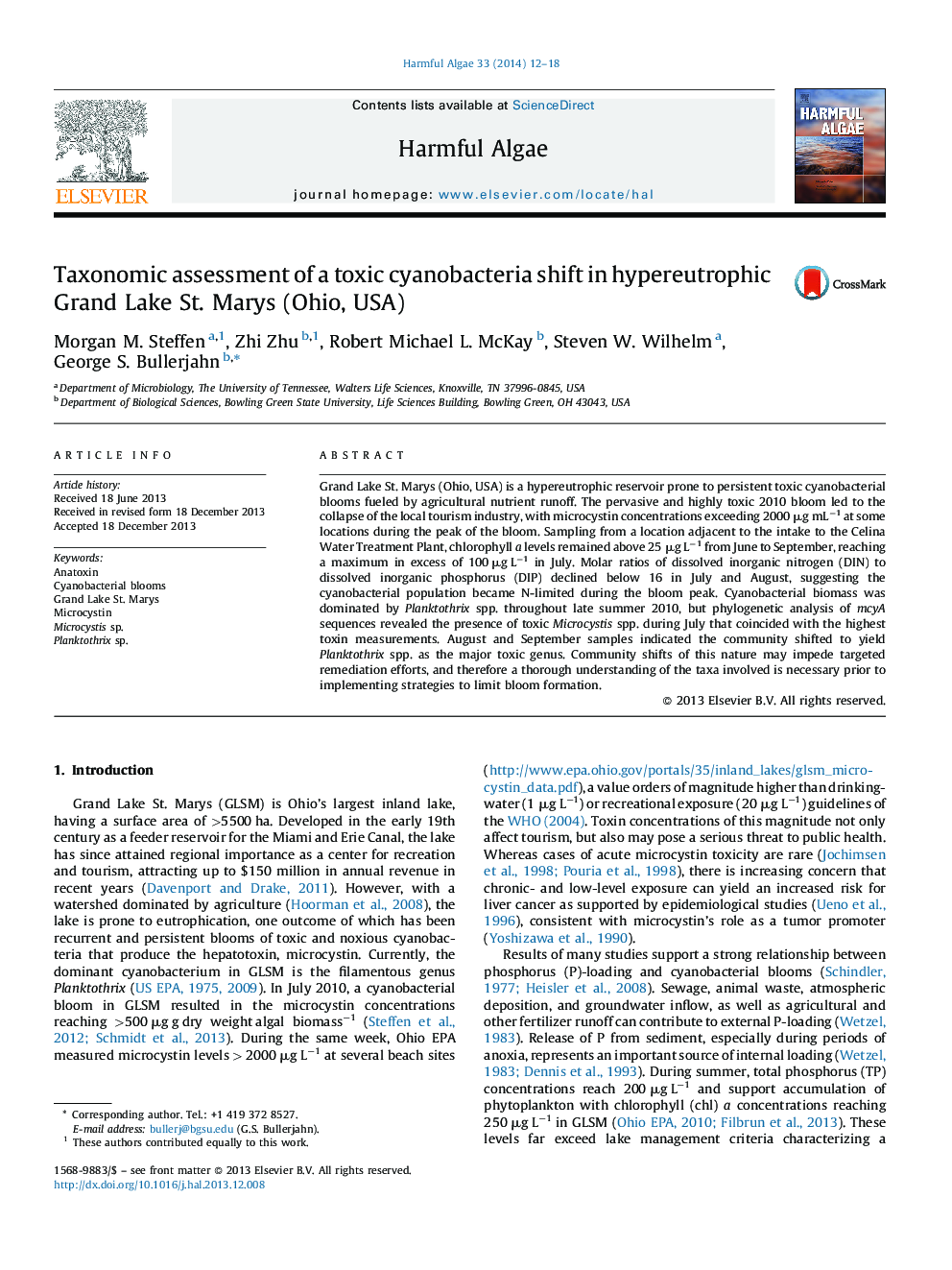| کد مقاله | کد نشریه | سال انتشار | مقاله انگلیسی | نسخه تمام متن |
|---|---|---|---|---|
| 4545299 | 1626938 | 2014 | 7 صفحه PDF | دانلود رایگان |

• Persistent toxic cyanobacterial blooms in Grand Lake St. Marys (Ohio, USA) have been attributed to toxic Planktothrix spp. that produce microcystins.
• Phylogenetic analysis of mcyA (gene microcystin synthetase subunit A) during the 2010 revealed a toxic population of Microcystis spp. in July.
• Despite the abundance and dominance of Planktothrix spp. in the lake, the July Microcystis spp. population likely contributed most of the toxin.
• Understanding taxonomic shifts in cyanobacterial populations during bloom events is necessary when developing abatement strategies.
Grand Lake St. Marys (Ohio, USA) is a hypereutrophic reservoir prone to persistent toxic cyanobacterial blooms fueled by agricultural nutrient runoff. The pervasive and highly toxic 2010 bloom led to the collapse of the local tourism industry, with microcystin concentrations exceeding 2000 μg mL−1 at some locations during the peak of the bloom. Sampling from a location adjacent to the intake to the Celina Water Treatment Plant, chlorophyll a levels remained above 25 μg L−1 from June to September, reaching a maximum in excess of 100 μg L−1 in July. Molar ratios of dissolved inorganic nitrogen (DIN) to dissolved inorganic phosphorus (DIP) declined below 16 in July and August, suggesting the cyanobacterial population became N-limited during the bloom peak. Cyanobacterial biomass was dominated by Planktothrix spp. throughout late summer 2010, but phylogenetic analysis of mcyA sequences revealed the presence of toxic Microcystis spp. during July that coincided with the highest toxin measurements. August and September samples indicated the community shifted to yield Planktothrix spp. as the major toxic genus. Community shifts of this nature may impede targeted remediation efforts, and therefore a thorough understanding of the taxa involved is necessary prior to implementing strategies to limit bloom formation.
Journal: Harmful Algae - Volume 33, March 2014, Pages 12–18